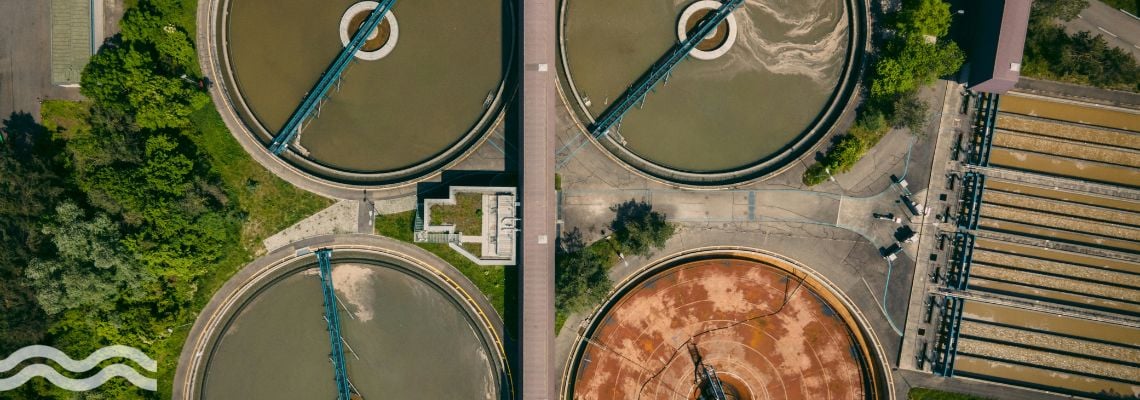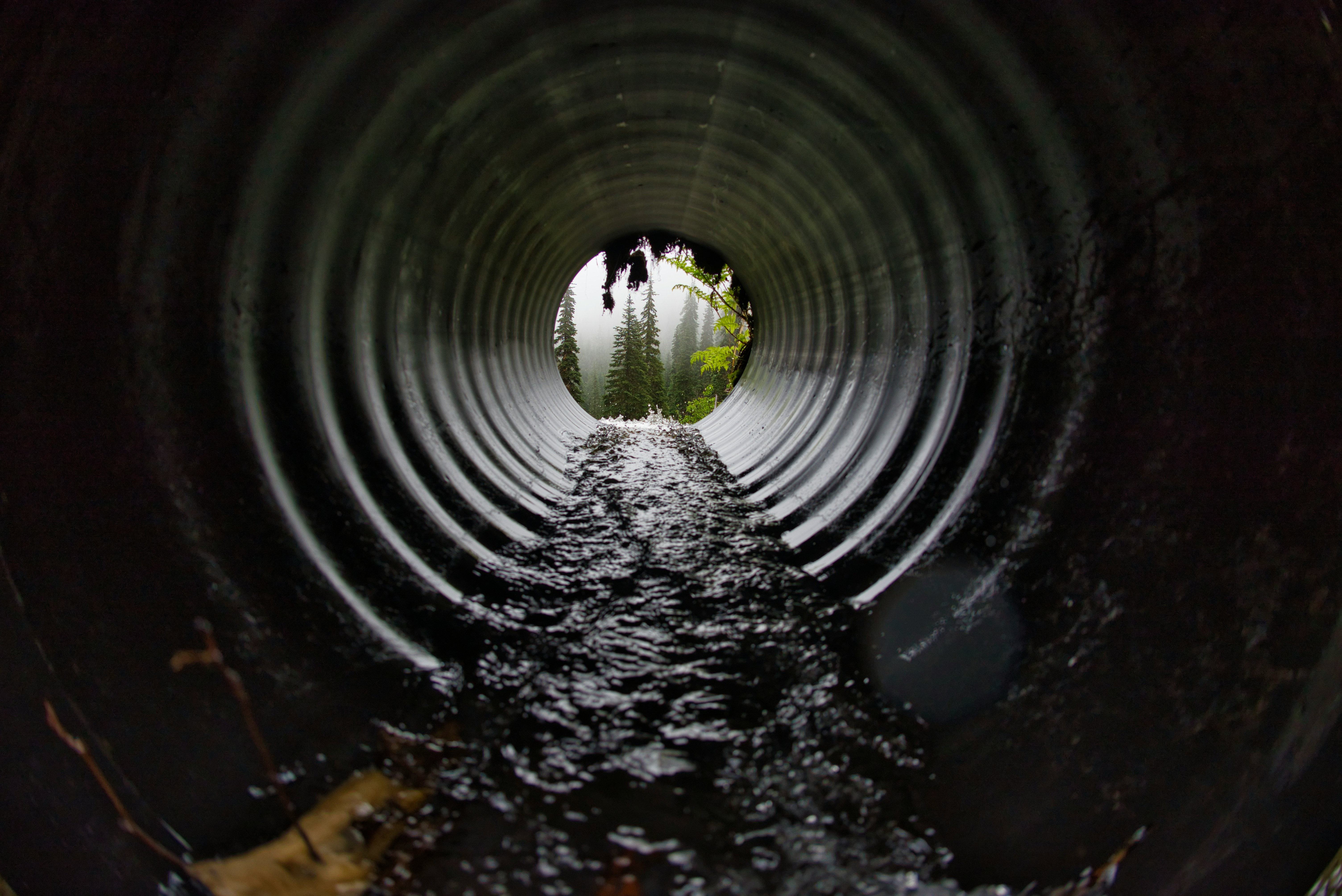Water contains small amounts of dissolved oxygen that are vital for aquatic life. The levels of dissolved oxygen are influenced by various factors and can be used to evaluate the health of rivers and lakes. One measure, known as biochemical or biological oxygen demand, can also be used to assess how well wastewater treatment plants are working to meet stringent guidelines on organic matter levels in effluents.

When microorganisms like bacteria break down organic matter under aerobic conditions in bodies of water, they consume oxygen. The amount of oxygen being consumed is known as biological oxygen demand (BOD), although it is sometimes also referred to as biochemical oxygen demand.
Although water contains oxygen molecules, this is not used by aquatic life. Instead, all life in water bodies uses dissolved oxygen, which is present in small volumes – approximately 10 molecules of oxygen per million of water.
Oxygen mainly enters bodies of water via the atmosphere, but also through groundwater discharge. Generally, fast-moving water, like rivers, contains more oxygen than static bodies of water, such as lakes and ponds.
So, for water to be ‘healthy’, it needs a sufficient amount of dissolved oxygen.
Chemical oxygen demand (COD) is an alternative method for estimating how much oxygen would be consumed by the decomposition of organic matter by bacterial action. The test uses a strong oxidising agent to chemically oxidise organic material in a wastewater sample under heat and strong acid conditions.
The figures derived from COD will be higher than through BOD due to the processes involved. The advantage of COD over BOD is that results can be ready in hours rather than days. However, the use of chemicals yields hazardous waste.
| Feature | Chemical Oxygen Demand (COD) | Biological Oxygen Demand (BOD) |
| Definition | Amount of oxygen required to chemically oxidize all organic and inorganic matter in water | Amount of oxygen required by microorganisms to biologically decompose organic matter in water |
| Measurement Time | Quick: Typically 2–3 hours (not including transportation of samples to a laboratory) | Slow: Typically 5 days (BOD₅) |
| Oxidizing Agent Used | Strong chemical oxidants (e.g., potassium dichromate) | Oxygen consumed by aerobic bacteria |
| Includes | Both biodegradable and non-biodegradable substances | Only biodegradable organic matter |
| Indicator of | Total potential oxygen demand | Biodegradable organic pollution |
| Temperature Sensitivity | Under specific conditions, variations in results may occur in warmer environments or at room temperature. It is crucial to closely monitor the temperature during COD measurements. | Highly sensitive to temperature and microbial activity |
| Biological Involvement | No biological processes involved | Relies on biological activity |
| Environmental Application | Useful for industrial and heavily polluted waters | Commonly used for domestic and municipal wastewater |
Levels of dissolved oxygen naturally fluctuate but can be affected by intense heat and by what humans put into the water, for example, fertilizers and other organic matter.

Biological oxygen demand comes from organic materials that end up in a body of water. Some of these are natural products of the environment, for example, fallen leaves and woody debris, such as twigs and branches, plants, seeds, grass, animal faeces and manure, and even dead animals.
Increasingly, in the modern world, BOD sources also come from human activity: fertilisers (both agricultural and from urban lawns), effluent from industrial processes, wastepaper, food processing plants, animal feed, septic tanks, urban storm water run-off, and other forms of pollution.
Another way to look at biological oxygen demand is that it measures how much oxygen is needed to remove waste organic matter from water. This means how much oxygen is needed by microorganisms in the water to make the organic matter ‘safe’, or as the USGS states, ‘unobjectionable’.
BOD can also be used as a measure in wastewater treatment plants, i.e. of the levels of organic pollution in water before it is discharged. Testing BOD levels at different stages of the wastewater treatment plant also offers a test of how effectively each process is working.
If organic material levels are too high when released, the discharged treated water will contribute to biological oxygen demand and risk depleting oxygen levels in any body of water it eventually reaches.
If dissolved oxygen levels fall to 5 parts per million or lower, all freshwater fish species such as trout and salmon will have died and even those species that can withstand lower oxygen levels, such as catfish and carp, will be at risk.
Essentially, determining biological oxygen demand involves measuring how dissolved oxygen levels change over a five-day period. One of the most common methods used is known as Standard Methods 5210B. Once collected in a sample bottle, the water needs to be tested in a controlled environment for BOD levels within 48 hours to determine a baseline figure.
Another test is performed after five days to find out how the levels have changed. The higher the BOD rating, measured in parts per million, the more organic matter is available as ‘food’ for bacteria, which leads to oxygen depletion. The lower the BOD level, the better the water quality.

Most countries will be subject to regulation on BOD levels in wastewater effluent. Regulation will include effluent concentration limits, maximum levels permittable per ‘population equivalent’, minimum reduction levels from influent to effluent, and the number of times samples need to be taken.
Factors that can be taken into account include unusual weather conditions and abnormal operating conditions. There may also be separate rules governing nitrogen and phosphorous limits.
In many countries, national regulations are often supplemented by local state guidelines on acceptable BOD levels.